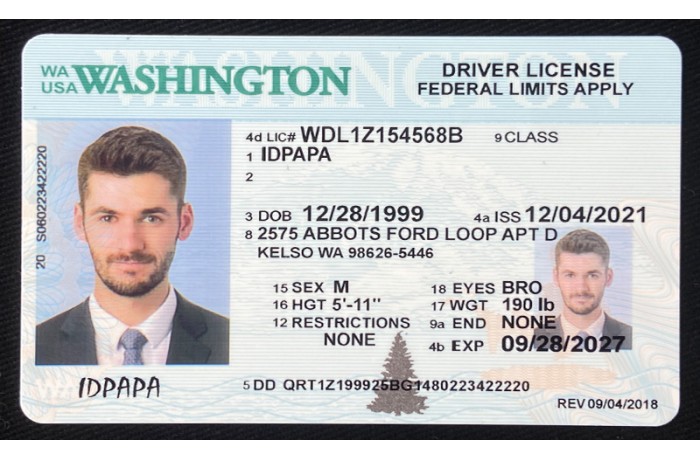In today's virtual landscape, our personal information are constantly at danger. ID fraud is a serious problem that can deeply affect your financial well-being. To mitigate this danger, it's crucial to safeguard your digital persona and adopt strong security.
Start by creating robust passwords for all your profiles and refrain from using the similar password across. Enable two-factor authentication whenever available to enhance an extra layer of security.
Stay vigilant when disclosing your data online. Thoroughly examine websites and emails before accessing connections. Exercise caution when making online transactions. Use secure platforms and monitor your financial accounts frequently.
Notify any suspicious activity to the concerned parties. By implementing these recommendations, you can effectively safeguard your digital persona and reduce the risk of ID fraud.
Navigating the Labyrinth: Understanding copyright Laws and Their Implications
The world of identification can be a complex one, especially when it comes to underage individuals seeking entry to establishments that dispense alcohol. Crafting a copyright may seem like an easy way around these restrictions, but the consequences of such actions can be severe. Understanding the legal ramifications of possessing or employing a copyright is vital to avoiding potential problems.
- Furthermore, it's important to recognize that laws regarding copyright vary from state to state, so it's crucial to investigate the specific legislation in your area.
- Possessing a copyright can result in hefty fines, community service, or even jail time.
- Beyond the legal repercussions, using a copyright can also damage your reputation and make it more difficult to obtain employment in the future.
Biometric Authentication: The Future of Identity Verification
As technology advances at a rapid pace, so too do the methods used to verify identities. Traditional authentication methods, such as passwords and PINs, are becoming increasingly vulnerable to attacks. Biometric security, which utilizes unique biologicaltraits for verification, is emerging as a more robust and secure solution. This technology leverages features like fingerprints, facial recognition, iris scans, and voice patterns to authenticate individuals with high accuracy.
- Biometric systems offer enhanced security by eliminating the risk of stolen or shared credentials.
- They provide a convenient and user-friendly experience, as users no longer need to remember complex passwords.
- The increasing implementation of biometrics in smartphones, laptops, and other devices further solidifies its position as the future of identity verification.
While biometric security presents numerous benefits, it also raises concerns about privacy and data protection. Implementing robust safeguards to ensure the preservation of sensitive biometric data is crucial. As we move towards a future where biometrics play a central role in identity management, striking a balance between security and privacy will be paramount.
Moving Past Passwords
In today's digital landscape, the traditional login protocol is increasingly becoming a vulnerable point. Cybersecurity threats are constantly evolving, making it imperative to explore more robust and innovative identity validation technologies. Biometric authentication, leveraging unique biological traits like fingerprints or facial recognition, offers a promising solution by providing a higher level of security than passwords. Additionally, multi-factor authentication (MFA) adds an extra layer of protection by requiring users to provide multiple forms of identification, comprising something they know, something they have, and something they are. These advanced technologies aim to create a more secure and seamless user experience, protecting sensitive data and enhancing online safety.
Leveraging these innovative approaches allows organizations to mitigate the risks associated with traditional passwords and establish a more secure foundation for digital identity.
Combating Identity Theft: A Multi-Layered Approach
Protecting your identity/personal information/data is paramount in today's digital landscape/world/environment. Identity theft, a growing/increasing/rampant threat, can have devastating/severe/profound consequences. Combatting this menace/issue/problem requires a multi-layered approach that encompasses several/various/multiple key strategies/measures/steps.
One crucial layer/aspect/element is strong/robust/comprehensive cybersecurity practices. This includes using complex/unique/strong passwords, enabling two-factor authentication/verification/approval, and being vigilant/aware/careful about phishing attempts/scams/schemes. Regularly monitoring/reviewing/checking your credit reports for any suspicious/unusual/irregular activity is also essential.
Additionally, get more info adopting/implementing/embracing best practices for handling/protecting/safeguarding your personal/sensitive/confidential information can help mitigate/reduce/minimize the risk of theft.
Be mindful/cautious/conscious about sharing details/information/data online and be wary of unsolicited/unknown/suspect requests for credentials/logins/access. Remember, a proactive approach to identity protection is your best defense/weapon/shield against this persistent/growing/common threat.
Protecting Your Privacy in a Digitally Connected World
In today's hyper-connected world, your data security is more significant than ever. As we transmit vast amounts of details online, it's vital to adopt measures to protect our digital footprint.
Periodically audit your privacy settings on all your accounts. Exercise diligence when interacting with links, and steer clear of unverified websites. Leverage strong, unique passwords for each service, and explore using a security tool to bolster your online protection.
Stay informed of the latest privacy threats, and train yourself on protective strategies to minimize your vulnerability. Remember, protecting your privacy is an persistent process that requires awareness.
